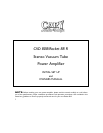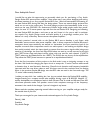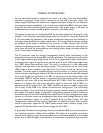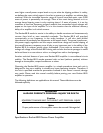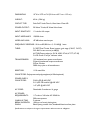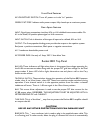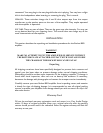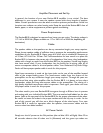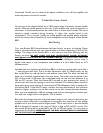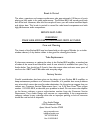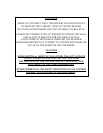THEORY OF OPERATION
For the technically minded, a review of the circuit is in order. Your new Rocket 88 R
operates in push pull triode Class A mode and in class A/B ultra-linear mode. The
output stage KT-88 tubes are biased with a negative fixed bias voltage for low distortion
and maximum output capabilities. In the triode mode, the Rocket 88 R is the most linear
and yields the most musically satisfying presentation. The output power is 30 watts of
triode power per channel and 60 watts per channel in ultra-linear mode.
The output transformers on the Rocket 88 R are the most important component in the
amplifier. They have been specifically designed by Cary Audio for use in the Rocket 88
R. We have taken the approach in the output transformer design not too dissimilar to
the single-ended amplifiers we design and produce. The primary and secondary windings
on portions of the output transformer are wound in a bifilar process with the two
inductors interleaving sixteen times. The bifilar wind (two conductors wound at the
same time) will yield the closest balance and coupling of any design currently utilized in
vacuum tube output transformers.
The E/I laminates used are silicone impregnated hipersil steel contributing to the
extremely low loss of the Rocket 88 R output transformer. The above process is similar
to the single-ended air-gap design found on the Cary single-ended output transformers.
A balanced drive signal is applied to the control grids of the KT-88 output tubes from
the 12BZ7 phase inverter/driver tube. This tube is configured in a dual differential
network that operates in the following manner: The first section of the dual triode
12BZ7 tube is direct coupled to the input RCA or XLR jack on the rear apron of the
amplifier. The drive signal is amplified through this first section in a class A, grid driven
circuit with the output signal inverted 180 out of phase at the anode and then coupled
to one half of the push-pull bank of KT-88’s. At the same time the second half of the
dual triode 12BZ7 is cathode driven in a grounded grid non-inverting class A gain stage
coupled to the other half of the push-pull bank of KT-88’s. With this network the
balance is a perfect plus and minus dual drive signal to drive the final KT-88’s in a
balanced push-pull configuration. The 12BZ7 cathodes are direct coupled to the anode
(sit on top) of the EL-84 in an infinite current source configuration. The EL-84 stage
takes the place of the conventional dropping resistor network found in conventional
gain stages. The power supply transformer is designed to operate at 200% continuous
commercial service at the full rated 80 watt output level. The high voltage power supply
section is a full wave center tap configuration (not some cheap voltage doubler as used
in many competitor’s amps) to a dual PI network with two filter chokes. This high
voltage section feeds the final output KT-88 tubes. An additional choke, filter network
serves as the power supply for the 12BZ7 phase inverter tubes. Another supply is the
negative DC grid bias and current source voltage for the EL-84’s.
A great deal of attention during design of your new Rocket 88 R was concentrated on
the “overload recovery” ability of the amplifier. The ability of an amplifier to instantly
recover from clipping is much more important than is commonly believed. In the output
power war of some amplifier manufacturers, the mentality is focused on high and then



